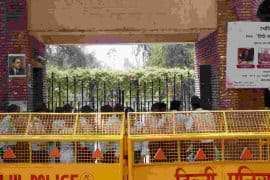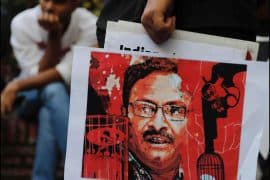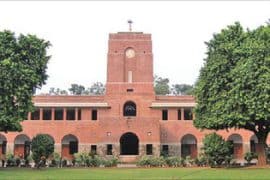Trump, a man who has been indicted 91 times, convicted more than 30 times, impeached twice, has multiple allegations of sexual assault, and is accused of inciting insurrection, is effectively one of the most powerful men in the world. While the outcome is the same as in 2016, the man is different this time around. His supporters, more radicalised, are expecting hardcore changes, and he intends to deliver them.
With the world’s eyes on them, over 140 million Americans went to the polls on the 5th of November, 2024. In a high-stakes race to elect the 47th President of the United States, the Republican Party was represented by the infamous Donald Trump for President and JD Vance as Vice President, while the Democratic Party’s ticket was Kamala Harris and Tim Walz as President and Vice President, respectively.
The incumbent president, Joe Biden from the Democratic Party, initially ran for re-election, but widespread calls for a younger candidate, along with his poor performance at the June 2024 presidential debate, led to his withdrawal and Harris’ nomination a month later. Trump, the 45th President of the USA, who had lost to Biden in 2020, ran for re-election for a non-consecutive term along with his running mate Vance.
What was at stake?
This was a critical election for many reasons and the main electoral issues according to the polls were the economy, immigration, democracy, abortion rights, foreign policy (particularly concerning Israel), and climate change.
Perhaps one of the key concerns of this election was abortion rights. This was the first presidential election that was held after the American Supreme Court’s controversial decision to overturn Roe v. Wade in 2022. This saw widespread polarisation within American society, with the right-leaning population supporting a complete ban on abortions in all cases and the left-leaning population protesting the attack on women’s bodily autonomy.
Immigration and border control also were one of the most widely debated issues by the voters. While Trump’s administration and policy have always been anti-immigration, this campaign saw more overt and conspicuous rhetoric. While the Democrat narrative may have seemed comparatively subtle, at its core it was also opposed to immigration.
Voters cited the economy as their top issue across many polls. Harris proposed raising taxes on corporations and high-earners to fund services for the lower and middle classes and reduce the deficit, while Trump’s economic policies can be described as protectionist and Neo-mercantilist.
Another crucial issue this year was America’s foreign policy, particularly in regard to Israel and Russia. Following the Israeli offensive, a wave of protests rocked the United States, particularly on its college campuses, urging the administration to withdraw support from Israel. Thus, Palestine formed a central focus for a lot of voters.
Harris aligned herself with Biden’s foreign policy on supporting Ukraine and while she condemned Israel’s invasion of Rafah, she maintained Israel’s ‘right to defend itself.’ Trump also declared complete support for Israel while maintaining an isolationist ‘America First’ foreign policy, vowing to impose tariffs on even trade partners. He promises to cut military spending on foreign affairs.
Democratic and republican campaigning strategy
Harris framed her campaign as “a choice between freedom and chaos” and based it around the ideals of “freedom” and “the future”. She aligned many of her policies to Biden’s appearing as more moderate in a bid to appeal to the more moderate conservatives. Her campaign became tethered to Biden’s crumbling legacy.
Her campaign maintained a more optimistic and joyful approach while they failed to connect with the voters. While her candidacy was historic owing to her being a woman of colour running for President, it failed to translate into votes as her appeal seemed more abstract than grounded in the realities of voters’ everyday lives.
Trump, on the other hand, heavily focused on dark and apocalyptic rhetoric about the state of the country and predicting doom if he did not win, making numerous false and misleading statements, and harnessing the tactics of fear mongering, all in his attempt to “make America great again”.
In the online world, which has a huge impact on the voting patterns of younger voters, Trump was able to mobilise support, particularly from younger men. His appearance on the Joe Rogan podcast as well as frequent endorsements by Elon Musk, led to an increase in his already huge popularity within the ‘manosphere,’ or the side of the internet dominated by men, while democrats reveled in the brat summer and the ‘bratification’ of Kamala Harris.
However, one of the most striking elements of the republican strategy was their unprecedented precision in targeted digital advertising. They were able to successfully harness the power of data analytics, tailoring ads to specific voter demographics based on nuanced local issues and cultural divides, while the democratic campaign stuck with more traditional approaches. For instance, in Michigan the Jewish communities received ads raising doubts about Harris’s stance on Israel, while in Pennsylvania, Muslim voters were shown ads criticising Harris’s perceived reluctance to advocate for a ceasefire in the Israel-Palestine conflict, allowing Republicans to pander directly to voter anxieties on a microscopic level.
Democrats, on the other hand, took the route of advertising to voters who they identified as moderate Republicans, spending as much as a billion dollars in digital ads. However, this strategy backfired as they did not see an increase in republican votes and failed to use that revenue to secure their democratic voter base.
Voting demographics
While the opinion polls showed a very close fight between both candidates, almost split to 50-50, the results showed a clear tilt toward the Republicans.
There was an apparent increase of support towards Trump from the Black community with 16% of Black voters voting for him as compared to 8% in 2020, while 91% of black voters had supported Biden and 83% voted for Harris.
Democrats also lost ground among Latino voters, with 56 percent voting for Harris in 2024 compared to 63 percent for Biden in 2020. Trump’s support grew from 35 percent in 2020 to 42 percent in 2024. Interestingly, 24% of Black men and 9% of Black women voted for Trump, clearly hinting at a gender divide among voters. This was also reflected among white voters, with 60% of white men voting for Trump as compared to 53% of white women. Younger voters from 18-44 years preferred Harris while those above 45 preferred Trump. Thus, Trump emerged as the most popular among older white males.
Indian-Americans, too, broke away from Democrats this year. From 2020 to 2024, the percentage of Indian-Americans identifying as Democrats dropped from 56% to just 47%, while support for Trump surged from 22% to 31%. This shift is particularly pronounced among younger Indian-American men
Result
The preliminary result with about 95% of the votes counted shows a clear victory for Donald Trump. Trump also had a clear sweep in the seven swing states with Arizona, Georgia, Michigan, Nevada, Pennsylvania, and Wisconsin all flipping to Republican from Democratic.
Trump has gained 50.5% of the votes and 312 of the 538 electoral votes and Harris, 47.92% as per the latest counting. Republicans have won a bigger share of votes in every state in 2024 compared to 2020. They lead the popular vote by about 4 million.
What lies ahead
Following the declaration of Trump’s apparent victory, Black Americans across many states received a text message asking them to ‘report for slavery.’ On Twitter harassment towards women surged, with the phrase ‘your body, my choice’, referring to the ban on abortion, being used as a catchphrase by many men. People, not only in America but across the world, are concerned over what Trump’s victory could mean.
Experts believe that a federal abortion ban seems unlikely. Instead, the Trump administration may seek to reinstate the Comstock Act, which bans anything related to abortion from being sent by mail—effectively banning abortion nationwide.
Trump in his campaign has also promised the ‘largest deportation’ hinting at a shift in his focus from immigrants at the border to those within the country, ones who have lived in the States for years. Trump’s re-election is also concerning news on the Gaza front, for he has declared unequivocal support for Israel.
On the economic front, economists theorise a possible increase in prices for Americans as Trump may seek to import a 10% tariff on all foreign goods. This could also have ramifications for America’s trade partners, including India.
How votes are counted and how it benefited the Republican Party
The victor is declared not based on who has the most number of votes, instead, both candidates compete to win contests held across the 50 individual states. In the United States, each state has a certain number of electoral college votes, partly based on population. Thus, when people vote for the president, they’re not voting directly for the candidate. Instead, they’re choosing electors in their state who will then vote for the president. There are 538 total votes in the electoral votes and a candidate requires 270 of those to win.
Most states use a rule where the candidate who gets the most votes in that state wins all of its electoral votes. This means if Candidate A wins by just one vote in a big state like Florida, they get all of Florida’s electoral votes. Some states usually vote for the same party every time, so candidates don’t spend a lot of resources on campaigning there. They instead chose to focus on a few key states, the swing states, where either party could win.
Perhaps the most interesting thing about this system is that a candidate can get more total votes from people across the whole country, the popular vote, but still lose the election if they don’t get enough electoral votes. This happened in 2016 when Hillary Clinton had more total votes from people but Donald Trump got more electoral votes and won the presidency. As of 11th November, 2024, Trump has long crossed the 270 mark, making him the undeclared winner, while the votes are still being counted.
Trump, a man who has been indicted 91 times, convicted more than 30 times, impeached twice, has multiple allegations of sexual assault, and is accused of inciting insurrection, is effectively one of the most powerful men in the world. While the outcome is the same as in 2016, the man is different this time around. His supporters, more radicalised, are expecting hardcore changes, and he intends to deliver them.
Read also: US Elections and impact on India
Featured Image Credits: NPR
Disha Bharti










